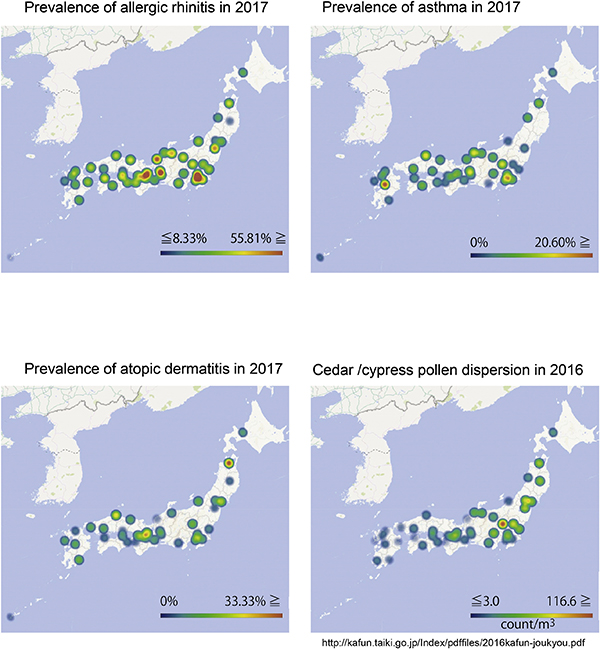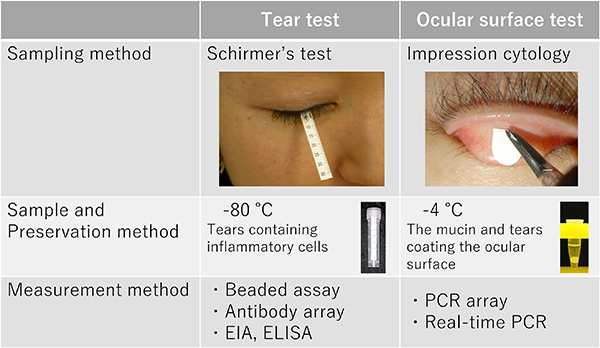Volume 69, Issue 4 (October 2020)
Review Series: Current Research Progress in Allergic Conjunctival Diseases
Regarding allergic conjunctival diseases, there have been relatively few reports on epidemiological studies in Japan or abroad. Miyazaki et al. reviewed previous reports and confirmed that allergic conjunctival diseases are highly regionalized due to racial differences, climate, socioeconomic background, etc. and are increasing globally. In addition to these factors, air pollution is said to contribute not only to the aggravation but also to the increased incidence of severe cases. Their review includes important suggestions for considering future trends in the management of allergic conjunctival diseases.
Clinical findings and laboratory data are important in understanding pathogenesis. In allergic conjunctival diseases, ocular itching and conjunctival hyperemia are the most common clinical findings. In actual clinical practice, most of the data confirming the existence of allergy in patients are generally obtained by measuring serum antigen-specific IgE. However, it would be desirable to assess the presence of allergic inflammation in the conjunctiva, which is the most common site of inflammation. Although conjunctival sampling is relatively easy, in some cases it can adversely affect visual function and future surgery. Therefore, Shoji et al. have focused their attention on the tears that cover the conjunctiva and cornea, and have energetically carried out research in which various molecules in tear fluid are shown to be involved in the pathogenesis of allergic conjunctival diseases. Based on the data in this review, they discuss future prospects for actual clinical practice.
As described above, as an objective clinical finding, conjunctival hyperemia is the highest in frequency, and the diagnosis is relatively easy to make. However, the degree of evaluation is generally judged by each examiner, based on a representative photograph, resulting in a large and problematic variation among examiners. Tabuchi et al. have devised a method for evaluating conjunctival hyperemia in a short time with high reliability and reproducibility by using an artificial intelligence technique. This versatile method can be used not only in ophthalmology but also in other clinical departments. Clinical application is being attempted, and future development is anticipated.
Inomata et al. have studied the possibility of grasping the overall picture of diseases such as dry eye by using multi-omics data and mobile health (mHealth). By extending that method, they are developing an application called Allersearch for pollinosis, which is caused by various factors including genetic/environmental factors and life styles. They review the latest information expected to be realized from i2b2 (Informatics for Integrative Biology and the Bedside) in the form of P4 medicine (preventive, predictive, personalized, participatory). There is no doubt that this method will play a major role in understanding the pathophysiology of future allergic conjunctival diseases and in determining treatment strategies.






